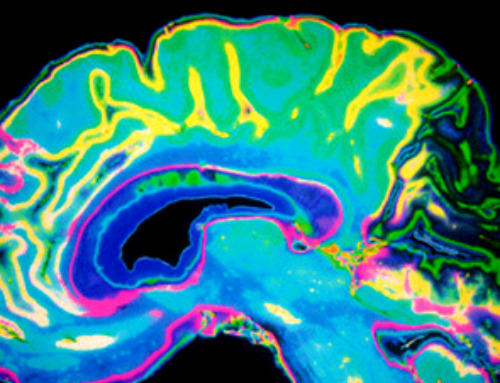A recent study conducted at the Montefiore Einstein Cancer Center has demonstrated that a low-cost antibacterial treatment regimen can prevent acute radiation dermatitis.
Acute radiation dermatitis (ARD), is a condition commonly found in those undergoing cancer radiation treatment, affecting as many as 95% of patients. This condition is marked by symptoms such as redness, soreness, itching, or peeling of the skin. More severe instances may result in considerable swelling and painful skin ulcers, significantly impacting the quality of life of the patient. However, our understanding of why ARD occurs remains limited, and there are no widely adopted, standardized methods for preventing its severe form.
Researchers at Montefiore Einstein Cancer Center (MECC) have found that many cases of ARD involve a common skin bacterium and that a simple, low-cost treatment can prevent severe cases, potentially setting a new standard of care for people undergoing radiation therapy.
"Until now, ARD was assumed to result simply from the skin being burned by the radiation, which meant that not much could be done to prevent it," said Beth N. McLellan, M.D. director, supportive oncodermatology at Montefiore Einstein Cancer Center, chief of the division of dermatology at Montefiore Health System and Albert Einstein College of Medicine, and senior author of the two studies. "The readily available treatment we've developed and clinically tested could potentially save hundreds of thousands of people each year in the U.S. from severe ARD and its excruciating side effects."
Identifying the Source
Staphylococcus aureus (SA) bacteria, often shortened to "staph," typically live harmlessly on the skin, often in the nose and armpits. But, they can cause infections if the skin is broken by a cut. Radiation weakens the skin's structure at the treatment site and can result in infection by allowing SA to break through the skin's outer layer. Courses of radiation therapy—routinely requiring daily treatments over several weeks—increase the risk of skin infection to occur.
Since SA is implicated in common skin disorders that lead to a breakdown in the skin such as eczema, Dr. McLellan and her colleagues reasoned that the bacteria might also play a role in ARD. In one of the JAMA Oncology studies, the MECC researchers enrolled 76 patients undergoing radiation therapy for cancer. Bacterial cultures were collected from patients before and after radiation treatment, from three different body sites: inside the nose, from skin in the radiated area, and from skin on the side of the body not exposed to radiation.
Before treatment, approximately 20% of patients tested positive for SA but did not have an active infection. Following treatment, 48% of those patients who developed severe ARD tested positive for the presence of SA, compared with only 17% of patients who developed the mildest form of the condition. Many patients with SA on their skin also tested positive for nasal SA, suggesting that SA from the nose might be infecting the skin.
"This study clearly showed that SA plays a major role in ARD," said Dr. McLellan. "The good news is we have a lot of tools to fight this bacteria. In a second study, we tested a topical antibacterial drug combination we thought would be effective and easy for people to use."
Preventing Severe ARD
The second study enrolled 77 patients undergoing radiation therapy, all but two of whom had breast cancer. Participants were randomized to receive either the standard of care at MECC (normal hygiene and moisturizing treatment such as Aquaphor), or the experimental antibacterial regimen. This treatment involved using the body cleanser chlorhexidine along with mupirocin 2% nasal ointment twice a day for five days, every other week, throughout their radiation treatment.
Although more than half the patients treated with the antibacterial regimen developed mild-to-moderate ARD, no patients developed moist desquamation—the most severe type of ARD that causes the skin to break down and develop sores—and no patients experienced adverse effects from the treatment. In contrast, severe ARD affected 23% of participants receiving the standard of care.
"Our regimen is simple, inexpensive, and easy so we believe it should be used for everyone undergoing radiation therapy, with no need to first test individuals for SA," said Dr. McLellan. "I expect this will completely change protocols for people undergoing radiation therapy for breast cancer."
Dr. McLellan also noted: "Like most of our trials at MECC, a majority of our participants were Black and Hispanic members of our community, meaning this protocol is generalizable and effective for people of different races and ethnicities. This is especially important because people with darker skin types are more likely to develop severe ARD."
References: "Bacterial Decolonization for Prevention of Radiation Dermatitis – A Randomized Clinical Trial" by Yana Kost, Alana Deutsch, Karolina Mieczkowska, Roya Nazarian, Ahava Muskat, H. Dean Hosgood, Juan Lin, Johanna P. Daily, Nitin Ohri, Rafi Kabarriti, Kosaku Shinoda and Beth N. McLellan, 4 May 2023, JAMA Oncology.
DOI: 10.1001/jamaoncol.2023.0444
News
Researchers highlight five pathways through which microplastics can harm the brain
Microplastics could be fueling neurodegenerative diseases like Alzheimer's and Parkinson's, with a new study highlighting five ways microplastics can trigger inflammation and damage in the brain. More than 57 million people live with dementia, [...]
Tiny Metal Nanodots Obliterate Cancer Cells While Largely Sparing Healthy Tissue
Scientists have developed tiny metal-oxide particles that push cancer cells past their stress limits while sparing healthy tissue. An international team led by RMIT University has developed tiny particles called nanodots, crafted from a metallic compound, [...]
Gold Nanoclusters Could Supercharge Quantum Computers
Researchers found that gold “super atoms” can behave like the atoms in top-tier quantum systems—only far easier to scale. These tiny clusters can be customized at the molecular level, offering a powerful, tunable foundation [...]
A single shot of HPV vaccine may be enough to fight cervical cancer, study finds
WASHINGTON -- A single HPV vaccination appears just as effective as two doses at preventing the viral infection that causes cervical cancer, researchers reported Wednesday. HPV, or human papillomavirus, is very common and spread [...]
New technique overcomes technological barrier in 3D brain imaging
Scientists at the Swiss Light Source SLS have succeeded in mapping a piece of brain tissue in 3D at unprecedented resolution using X-rays, non-destructively. The breakthrough overcomes a long-standing technological barrier that had limited [...]
Scientists Uncover Hidden Blood Pattern in Long COVID
Researchers found persistent microclot and NET structures in Long COVID blood that may explain long-lasting symptoms. Researchers examining Long COVID have identified a structural connection between circulating microclots and neutrophil extracellular traps (NETs). The [...]
This Cellular Trick Helps Cancer Spread, but Could Also Stop It
Groups of normal cbiells can sense far into their surroundings, helping explain cancer cell migration. Understanding this ability could lead to new ways to limit tumor spread. The tale of the princess and the [...]
New mRNA therapy targets drug-resistant pneumonia
Bacteria that multiply on surfaces are a major headache in health care when they gain a foothold on, for example, implants or in catheters. Researchers at Chalmers University of Technology in Sweden have found [...]
Current Heart Health Guidelines Are Failing To Catch a Deadly Genetic Killer
New research reveals that standard screening misses most people with a common inherited cholesterol disorder. A Mayo Clinic study reports that current genetic screening guidelines overlook most people who have familial hypercholesterolemia, an inherited disorder that [...]
Scientists Identify the Evolutionary “Purpose” of Consciousness
Summary: Researchers at Ruhr University Bochum explore why consciousness evolved and why different species developed it in distinct ways. By comparing humans with birds, they show that complex awareness may arise through different neural architectures yet [...]
Novel mRNA therapy curbs antibiotic-resistant infections in preclinical lung models
Researchers at the Icahn School of Medicine at Mount Sinai and collaborators have reported early success with a novel mRNA-based therapy designed to combat antibiotic-resistant bacteria. The findings, published in Nature Biotechnology, show that in [...]
New skin-permeable polymer delivers insulin without needles
A breakthrough zwitterionic polymer slips through the skin’s toughest barriers, carrying insulin deep into tissue and normalizing blood sugar, offering patients a painless alternative to daily injections. A recent study published in the journal Nature examines [...]
Multifunctional Nanogels: A Breakthrough in Antibacterial Strategies
Antibiotic resistance is a growing concern - from human health to crop survival. A new study successfully uses nanogels to target and almost entirely inhibit the bacteria P. Aeruginosa. Recently published in Angewandte Chemie, the study [...]
Nanoflowers rejuvenate old and damaged human cells by replacing their mitochondria
Biomedical researchers at Texas A&M University may have discovered a way to stop or even reverse the decline of cellular energy production—a finding that could have revolutionary effects across medicine. Dr. Akhilesh K. Gaharwar [...]
The Stunning New Push to Protect the Invisible 99% of Life
Scientists worldwide have joined forces to build the first-ever roadmap for conserving Earth’s vast invisible majority—microbes. Their new IUCN Specialist Group reframes conservation by elevating microbial life to the same urgency as plants and [...]
Scientists Find a Way to Help the Brain Clear Alzheimer’s Plaques Naturally
Scientists have discovered that the brain may have a built-in way to fight Alzheimer’s. By activating a protein called Sox9, researchers were able to switch on star-shaped brain cells known as astrocytes and turn them into [...]





















